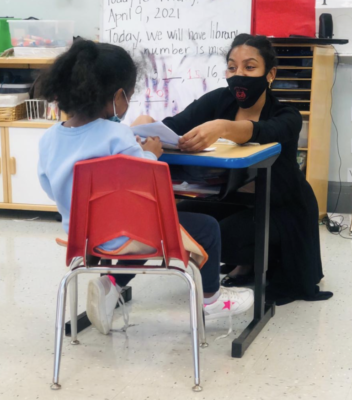by Sharifa Yamba
It was mid-winter 2021 in the middle of the pandemic. DC Public Schools announced that schools would return to in-person learning in February. There was a lot of apprehension around this decision.
I, on the other hand, was relieved.
This was my first-year teaching kindergarten and I felt like a new teacher. I spent my mornings and afternoons sitting behind a computer telling my students to come back to their seats, turn on their camera, and to mute themselves. Like many teachers across the country, the experience was stressful and disheartening. The children were falling behind.
I did not feel very confident with teaching literacy. I knew nothing about the foundations of literacy, and I was worried.
So yes, I jumped at the opportunity to be the returning kindergarten teacher!
- The DIBELS data across all 4 kindergarten classrooms demonstrated that the kids needed major literacy support.
- I would teach 11 students, chosen from the 4 classes. ELL students and students with IEPs would be prioritized for in-person learning.
MOY DIBELS Data for In-Person Students
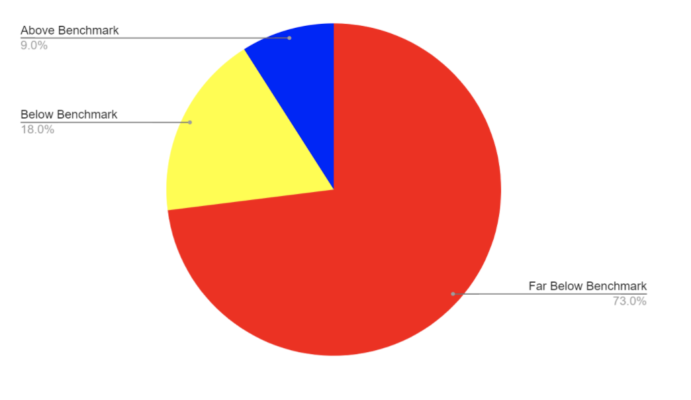
We were moving away from guided reading and exploring structured literacy, with a huge focus on developing students’ phonemic awareness.
Phonological & Phonemic Awareness
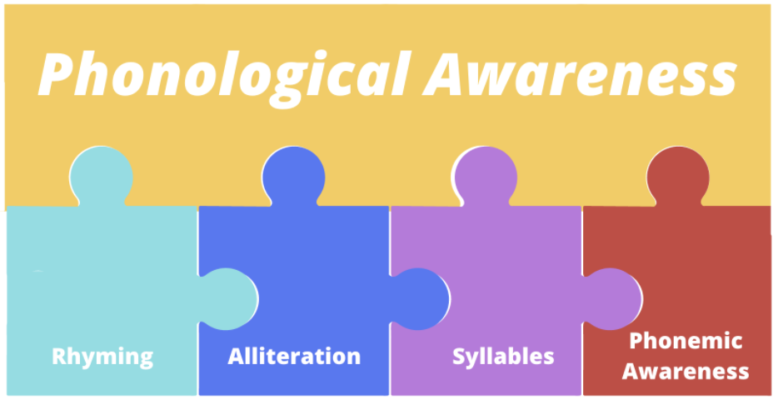
“Phonological awareness includes all the properties of spoken language.”(Kilpatrick, 2019)
It is a broad category that includes rhyming, alliteration, syllables, phonemic awareness, and much more.
Phonemic awareness is simply “the awareness of phonemes” (the smallest units of sound in a word), and it includes the ability to identify, segment & blend, and manipulate phonemes in spoken words.
Literacy Plan
Tier 1
- We used Heggerty for whole group, which is a quick 10-minute phonemic awareness lesson
- Those who struggled were expected to listen and repeat their peers.
Tier 2
- Most students received a second dose of Heggerty during structured literacy. We focused on beginning sounds, and segmenting/blending 2-phoneme words. Eventually we moved to 3-phoneme words.
- This portion was 2-4 minutes of the small group lesson.
Tier 3
- Some students received a 3rd dose of 1-on-1 support during the day.
- This included a couple minutes of blending and segmenting.
I had my students from February until June. During this period the light bulb turned on one by one. As they began ‘hearing and recognizing’ sounds in words, they simultaneously began decoding CVC words.
Student B
Student B I hold dear to my heart. He was from my original class, so I was familiar with his home situation. I fought hard to get him into the classroom because I knew how badly he needed literacy support. Student B is being raised by a loving grandparent who only speaks Spanish and cannot read or write Spanish, nor English. Nobody else at home was available to support him with his literacy development.
Student B’s Strengths
- He could identify the letter names and sounds of all the letters that were taught.
- He seemed to have a good memory when it came to concrete skills.
What I noticed is that Student B did not have awareness on how to blend sounds together to decode.
I thought that if my students knew the sounds of the letters within a CVC word, then all they needed to do was tap each sound and blend it together.
I was not aware of how important phonemic awareness was.
If I presented Student B with the word cat, he may respond by first tapping out each sound and then attempting to blend the sounds together: “/c/ /a/ /t/ fap”.
I was left scratching my head. How did he get fap from cat?
He knew all the letter sounds in the printed word but could not blend those sounds into a word.
This prompts me to discuss what I have learned.
- The English language uses an alphabetic writing system. This means that our language uses symbols (letters) which represent sounds (or phonemes). These letters (and their corresponding sounds) are combined to create words.
- In contrast, in the Chinese language system a symbol can represent a whole word.
Why is this important?
First a child learns to speak. When it is time to learn to read, they are required to have a foundation on:
- how their speech breaks down into phonemes,
- the letters that correspond with those phonemes,
- and how to blend those phonemes together.
***This ability translates into decoding. ***
Research
- “People who can take apart words into sounds, recognize their identity, and put them together again have the foundation skill for using the alphabetic principle.” (Liberman, Shankweiler, & Liberman, 1989; Troia, 2004)
- “Without phoneme awareness, students may be mystified by the print system and how it represents the spoken word. Students who lack phoneme awareness may not even know what is meant by the term sound. They can usually hear well and may even name the alphabet letters, but they have little or no idea what letters represent.”
- “Students must be able to identify /d/ in the words dog, dish,and mad and separate the phoneme from others before they can understand what the letter d represents in those words.” See here for more.
After gaining this understanding, I now realize why it is so hard for some children to decode, especially children in the foundational stages of reading. Becoming a successful reader of a language that is alphabetic requires mastery of an additional step, phonemic awareness!
I continued working with Student B, consistently meeting with him 1-on-1 to practice segmenting and blending. By late May, he finally started recognizing phonemes in words. He slowly began decoding CVC words, retaining some high frequency words, and reading simple sentences. His face would light up with pride. He was accomplishing something that took practice and persistence.
Student B probably needed another 3 months to really solidify the skills that he was developing, but summer break began at the very end of June. Student B ended the school year with a DIBELS score that was still far below level, but I was proud of his breakthrough.
I would like to share Student B’s current DIBELS data now that he is in 1st grade. Student B and his current teacher have been working hard! He is currently on benchmark with phonemic awareness and nonsense word fluency!
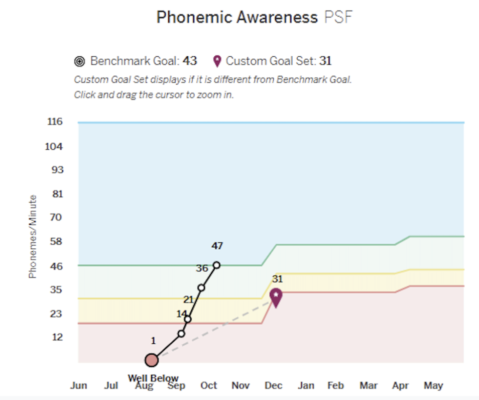
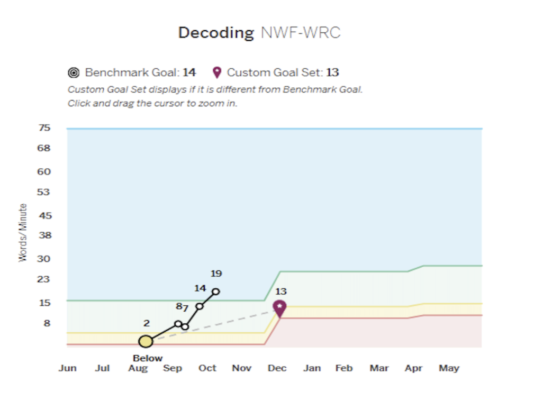

Sharifa Yamba is currently a kindergarten teacher with DC Public Schools. She is in her 5th year teaching in Washington D.C. and she spent 3 years in the United Arab Emirates teaching 2nd grade. Sharifa enjoys the outdoors, traveling, eating, and having new experiences.
